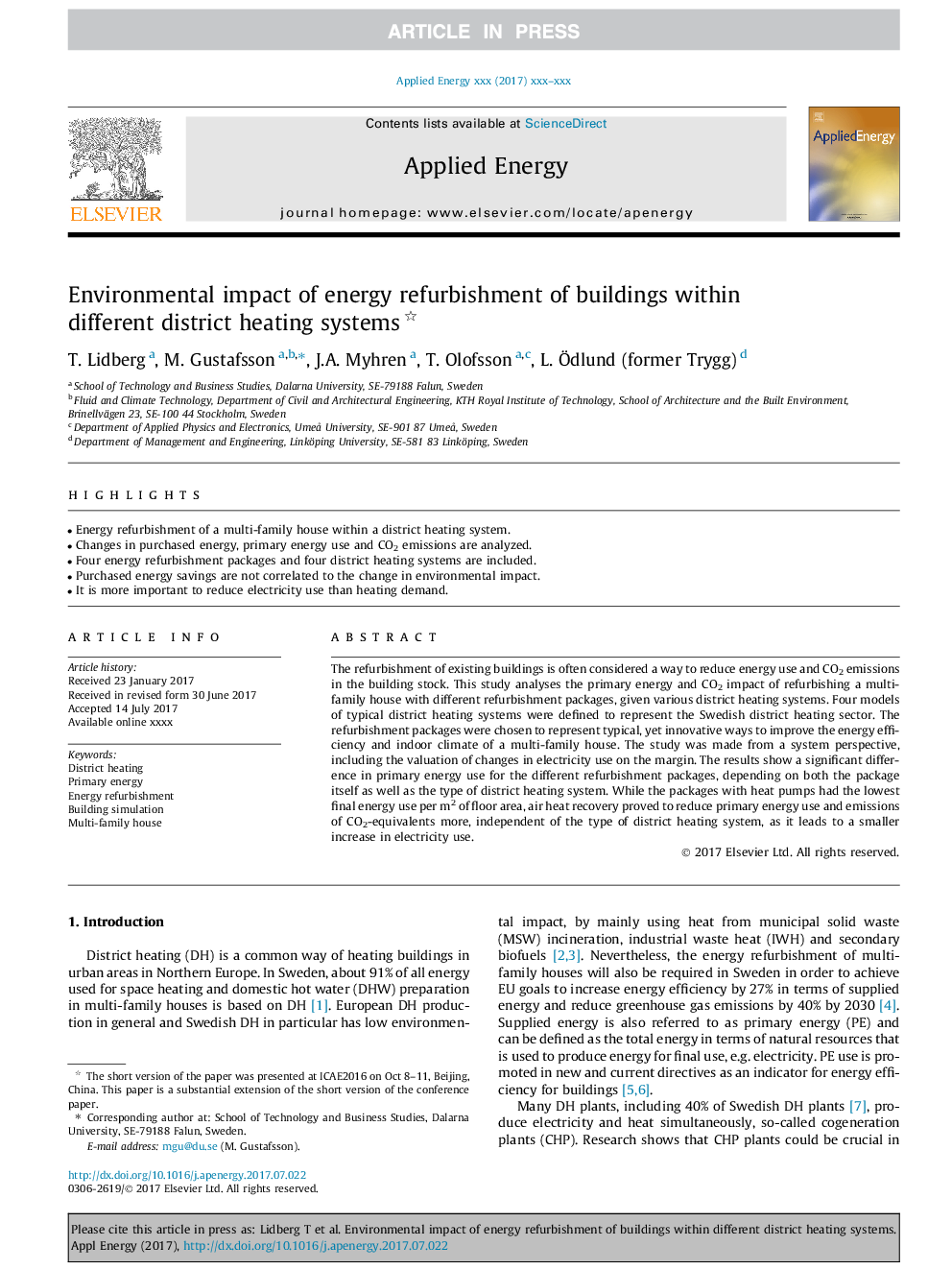| Article ID | Journal | Published Year | Pages | File Type |
|---|---|---|---|---|
| 8953444 | Applied Energy | 2018 | 8 Pages |
Abstract
The refurbishment of existing buildings is often considered a way to reduce energy use and CO2 emissions in the building stock. This study analyses the primary energy and CO2 impact of refurbishing a multi-family house with different refurbishment packages, given various district heating systems. Four models of typical district heating systems were defined to represent the Swedish district heating sector. The refurbishment packages were chosen to represent typical, yet innovative ways to improve the energy efficiency and indoor climate of a multi-family house. The study was made from a system perspective, including the valuation of changes in electricity use on the margin. The results show a significant difference in primary energy use for the different refurbishment packages, depending on both the package itself as well as the type of district heating system. While the packages with heat pumps had the lowest final energy use per m2 of floor area, air heat recovery proved to reduce primary energy use and emissions of CO2-equivalents more, independent of the type of district heating system, as it leads to a smaller increase in electricity use.
Related Topics
Physical Sciences and Engineering
Energy
Energy Engineering and Power Technology
Authors
T. Lidberg, M. Gustafsson, J.A. Myhren, T. Olofsson, L. Ãdlund (former Trygg),
